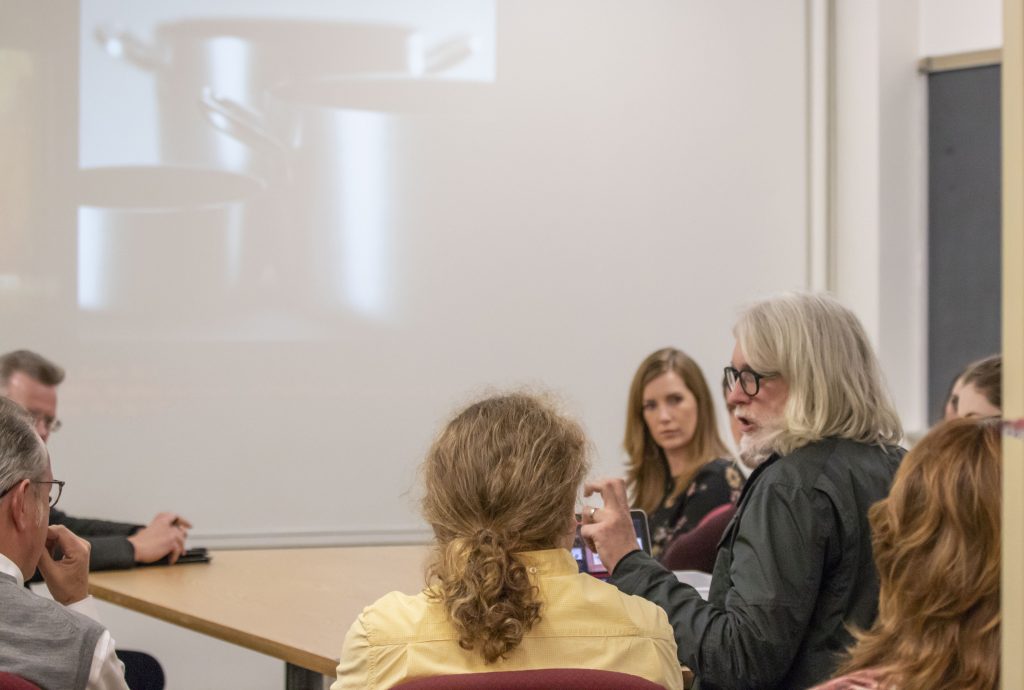
On Wednesday evening, Thomas McDonough, associate professor of art history, gave a paper titled “The Gestus of Things” for The Harpur College Dean’s Workshop on Visual Culture (VizCult). His research was presented at the Visual Resources Center to an audience comprising Harpur College faculty, graduate and undergraduate students.
The eponymous “gestus” refers to the German word for “gestural” — here, McDonough uses the phrase to examine the expressive qualities of American and German bodies of photography and installations. Though the concept of gestus originates from early 20th-century theatrical innovator Bertolt Brecht, McDonough applies the term to still images as what can be interpreted from “freezing of action.”
“This is a concept in the radical playwright’s theatrical system … succinctly defined as the socially significant language of a body’s carriage, posture or attitude, what one scholar aptly calls a hieroglyph or ideogram read from a human body,” McDonough said.
McDonough’s research primarily centered on the oeuvre of American artist Christopher Williams, whose work mainly lies within photography. To illustrate the gestural and theatrical aspects of Williams’ work, McDonough examines the consumerist photographs of Zoe Leonard and portraits from Thomas Ruff, in addition to the Brechtian influences.
“It starts to sound like I’m positioning Williams as this artist of contemporary critique, and I don’t think that would be very fair or accurate,” McDonough said. “He’s fully within a system. He’s super-aware of all these histories and definitely bounces off of them in complicated ways, but it’s work that always acknowledges or wants to recognize some distance between the representation and the social world it exists in.”
Within the art history department, graduate students are encouraged to attend the discussions because VizCult can offer a clearer picture of what is expected when presenting research at conferences.
“The talk was fascinating in the way that he has specific thoughts on postwar societies and the artistic and political in between those boundaries,” said Misung Jeon, a first-year graduate student studying art history. “He’s really developing his focus not only on the artistic intention. He’s expanding it into the fundamental problem of the art like the representation, display and how [visual] art is not being art — it’s being theater or stage or drama.”
VizCult also opens up a setting of discussion for faculty; most of the papers presented in the series are in-the-works and face criticism from the art history department prior to publication in journals or presentation at other conferences.
“This is one of my favorite things about the department here,” said Julia Walker, assistant professor of art history. “We have a very structured opportunity to come together with faculty and grad students to have conversations … where someone is able to present something that’s new or in process, sometimes even very close to completion, to get feedback from an invested group of peers.”


